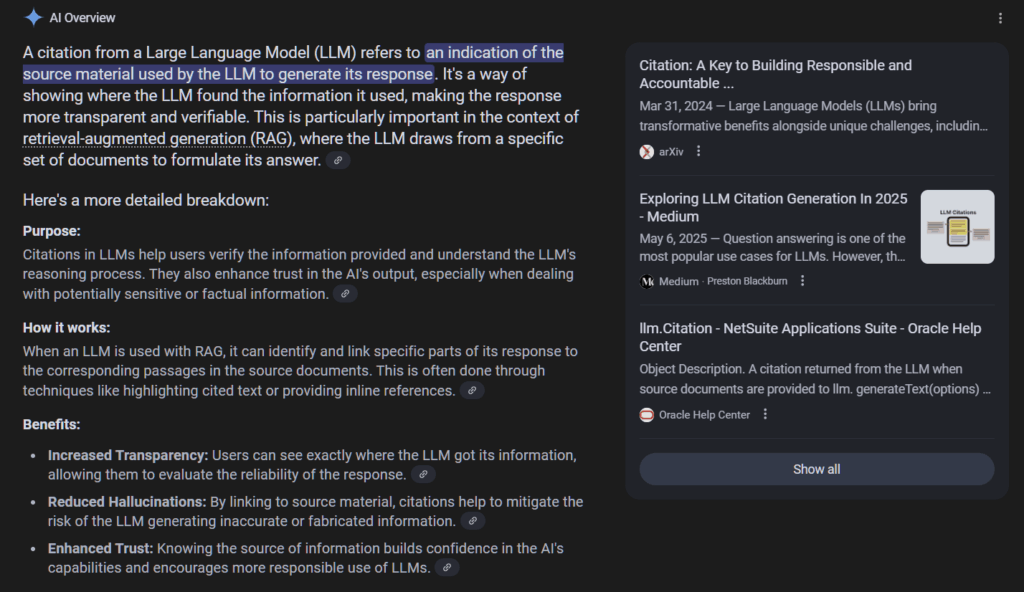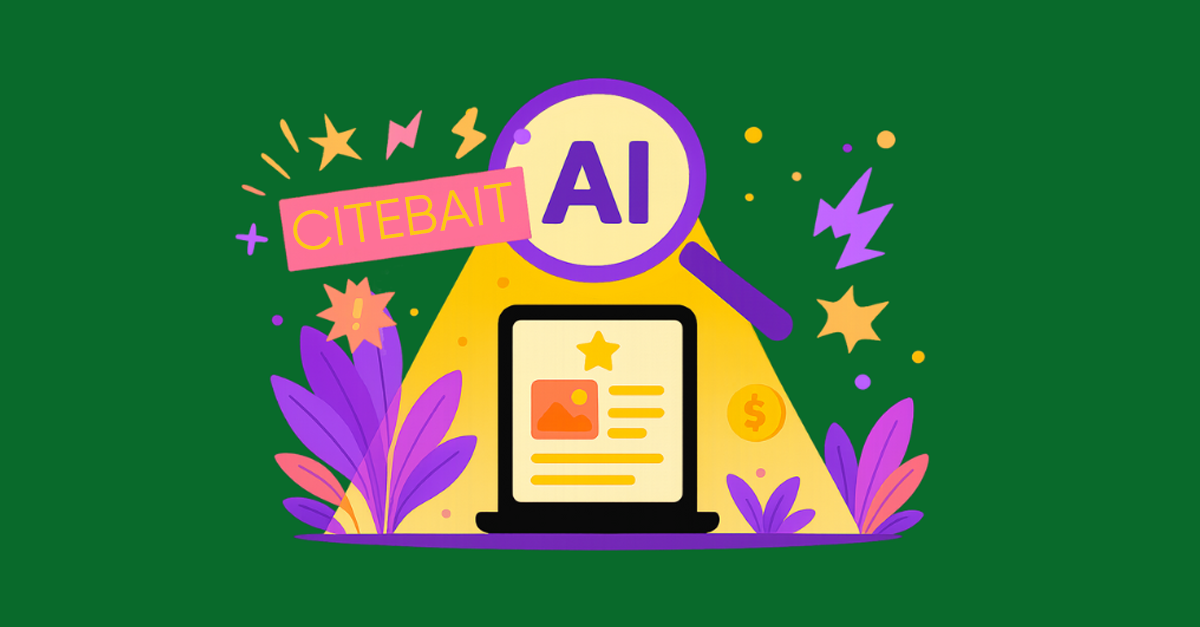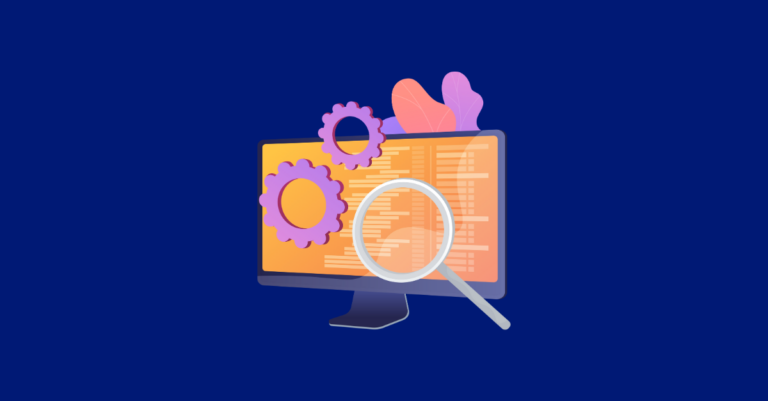From Clickbait to Citebait: Winning in the AI Citation Economy
TL;DR
- AI Overviews reduce clicks to traditional search results. Being cited in AI answers is the new SEO win—and it’s where LLM optimization (AEO/GEO) becomes as important as traditional search engine optimization.
- “Citebait” = content so original, structured, and factual that AI tools want to cite it.
- Use formats such as research reports, FAQs, case studies, and how-to guides to maximize citability.
- Add schema, place your best facts at the top, repeat them, and ensure they are in selectable text.
- Don’t rehash rehashes! AI and Google reward first-hand, original information.
Looking for an SEO partner that understands visibility in the AI world?
The End of the Click?
The classic SEO game—optimizing titles and snippets to earn a click—is breaking. When an AI Overview (AIO) appears, users click less.
Pew’s July 2025 analysis found that when an AI summary appeared, users clicked a standard result 8% of the time, compared to 15% without one—a 7-point drop (~47% relative). (It should be noted that Google disagrees with the Pew findings.)
Publishers have reported steep declines since AIO launched; The New York Post reports that top news sites have dropped by ~40%. Even Google concedes impact varies by site/category—i.e., winners and losers. Translation: distribution is changing, even if totals look flat in aggregate.
Being present in AI answers is increasingly more critical. The name of the game is visibility.
The “AI Citation Economy”
Google’s AI Overviews isn’t itself a standalone LLM — it’s a feature of Google Search powered by underlying LLMs and other ranking systems. It uses generative AI to synthesize results from web content, grounded in Google’s search index, and display a summarized answer at the top of the SERP.
In the AI Overviews example below, note the small “chain” icons that represent links to the source material. The right rail shows some of those sources. These are citations. Unfortunately, searchers are generally satisfied with the content provided, so they don’t feel the need to click on the citations to your website.

Copilot, Perplexity, and SearchGPT-style modes ground answers with web search. They query Bing or Google, extract passages, then synthesize a reply with inline citations. Those citations attribute the claims and link to the source.
What Is “Citebait”?
Citebait is content so solid — structured, factual, original — that AI tools want to pull from it, quote it, and credit it. It’s optimized to be found, trusted, and referenced.
What Elements Make Content Irresistible to LLMs?
- Original Data: First-party surveys, internal experiments, case studies—not repurposed content. It’s your primary content.
- Clean Structure: Headlines, bullet lists, schema markup, tables—easy for AI to parse.
- Fact Density: Quote-ready stats and definitions, backed by sources.
- Brand Attribution: Tie your brand name to key statements to ensure the LLM associates credibility with you.
- Authority Signals: Show expertise and trust through depth, references, and expert tone.
Formats Built for AI Citations
AI favorites include:
- Research reports or whitepapers with real metrics.
- FAQ pages & glossaries with clear answers.
- Case studies with tangible outcomes.
- How-to guides and listicles. These formats offer direct, grab-ready content.
Optimize for Retrieval — Not Just Ranking
LLM optimization should be part of your core search strategy. Make content easy to find and easy to cite. AEO is more than FAQ or HowTo formatting. Learn how LLMs parse, disambiguate, and choose passages for AI answers, including Google AI Overviews.
Present key facts and statistics both at the top of the page and throughout the body to maximize the chances of being cited. But do so in smaller, bite-sized chunks of copy.
Go beyond basic keyword targeting to ensure your content is semantically rich and covers related concepts and queries, as AI systems often use “query fan-out” to explore multiple angles of a user’s intent. Each page should be built with flexibility in mind, capable of addressing varied but related questions while maintaining clarity, authority, and factual precision.
These approaches not only improve your chances of being surfaced in AI-generated summaries but also position your brand as a go-to source in the citation economy.
Sample “Citebait” Page Blueprint
This is a loose guideline of things we know often get cited:
- Title – Give your article a clear name that tells the reader exactly what it’s about. For example: “2025 B2B SEO Benchmarks: Conversion Rates by Channel.” This way, anyone (including AI) knows right away if it’s relevant.
- TL;DR (Too Long; Didn’t Read) Box – At the very top, consider including a quick summary with 4–6 short bullet points. Each bullet should include a citeable fact.
- Share Findings – For each result you want to share, include one clear statistic, such as “Traffic increased by 32%,” followed by a chart or graph that shows the data visually, and then add two to four sentences explaining in simple terms what the statistic means and why it matters.
- FAQ (Frequently Asked Questions) – Make a list of 6–10 common questions and short answers related to your topic. This helps readers and AI find clear definitions. You can also add a type of coding called “FAQ schema” so search engines understand it better.
- Applications – Explain to the reader how to apply your findings in real-life situations. Break it down step-by-step.
- Downloadables – Let readers download your data in easy-to-use formats, such as CSV or PDF. Always include the “last updated” date so people know it’s up to date.
- Internal Links – Link to other pages on your site that provide more details, such as a main “pillar” page on the topic or related tools, calculators, or definitions. This helps readers (and AI) connect all the dots.
- References – List any outside sources, studies, or standards you used so people can fact-check and see where your information came from.
What Not To Do
- Don’t bury the lede. If your best stat is buried in dense paragraphs, LLM crawlers may disregard it. Put it in the TL;DR and early in your article. Don’t be afraid to repeat it.
- Don’t trap facts in images. Don’t trap important facts solely inside images. While AI Overviews can process and even prefer rich visuals for specific queries, they still rely heavily on readable text for extracting and verifying key data.
The safest approach is to pair every chart, graph, or infographic with a clear text description of its core numbers and insights so both humans and AI can read, reference, and cite them accurately. - Don’t publish derivative “summaries of summaries.” Don’t just rehash something that’s already a rehash. If you’re summarizing someone else’s summary, you’re not adding anything new. Google’s people-first guidelines, and the way AI Overviews work, favor fresh, first-hand information that comes directly from the source, not recycled takes on someone else’s work.
Bottom Line
AI Overviews and other LLM-powered search tools are reshaping how organic visibility works. Ranking for blue links is no longer enough. If your brand isn’t also being cited inside AI-generated answers, you’re losing exposure before a click even becomes possible. The path forward is to produce citebait through strategic optimization of LLM content. That is original, well-structured, factual material that AIs want to reference and credit.
Optimize for retrieval, not just ranking, and treat citations as the new top position in search.







